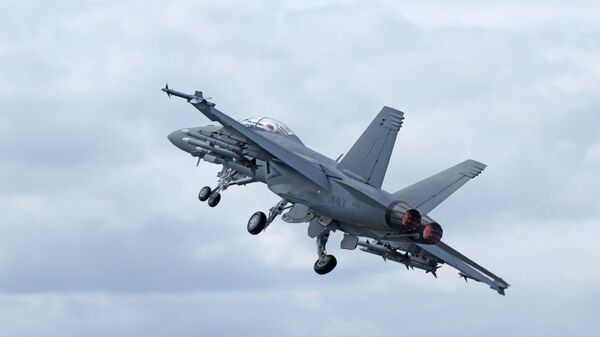According to the Naval Safety Center, a two-seater F/A-18F Super Hornet experienced an engine fire on Monday while flying along the southeastern Virginia coast, forcing it to return to NAS Oceana in Virginia Beach.
"The aircraft landed safely at NAS Oceana without incident. An aviation mishap investigation has been initiated to determine the cause of the incident," Cmdr. Jennifer Cragg, a spokesperson for Naval Air Force Atlantic, told Military.com on Wednesday. "There were no injuries."
Two weeks prior, an almost identical incident occurred involving a different F/A-18F. Cragg said that “it is too early to speculate the causal factors for the in-flight engine fire” in the two jets, but that investigations were underway.
US Navy aircraft commonly have two engines to increase their ability to survive such incidents when out at sea, and the Hornet is no exception, able to limp back to base on a single engine if the other suffers a problem. A notable exception to this rule is the F-35 Joint Strike Fighter, which has just one engine.
It hasn’t been a good summer for US aviation. In July, Sputnik reported that in the previous 60 days, seven different US fighter jets had crashed across the various service branches, including another F/A-18F and some stealthy F-35 and F-22 aircraft. Military.com likewise noted that the Navy saw a third engine fire earlier this month when a Marine Corps CH-53E Super Stallion helicopter was forced to make an emergency landing at Marine Corps Air Station New River in North Carolina.

